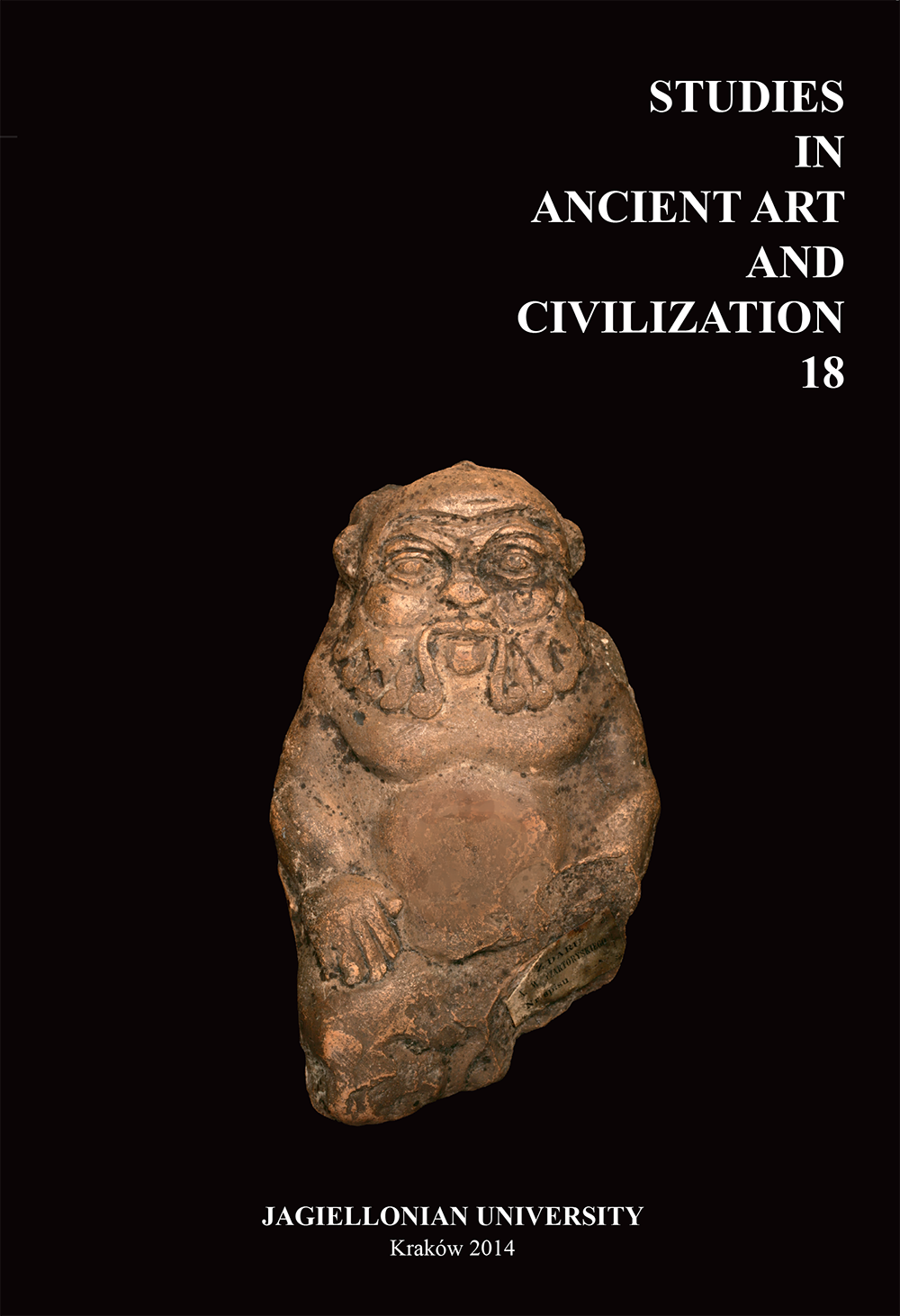The Beard of Rameses VI
DOI:
https://doi.org/10.12797/SAAC.18.2014.18.12Keywords:
Rameses VI, KV 9, iconography of the king, beard, khepreshAbstract
The beard first appeared in Egyptian iconography in the Early Dynastic period on the Narmer palette and remained a common feature thereafter. The pharaoh, as a god on earth, was a personification of perfection. Always crisp and clean-shaven, he represented both the Egyptian nation and divine power. His fake beard, which was attached with ribbons and was clearly visible on his images and reliefs, was one of the elements indicating his divine nature.
Ordinary people also grew beards or moustaches. We can see stubble on the faces of men mostly engaged in physical work on a number of images on the walls of tombs. However, in these cases, the facial hair would not have indicated any godly qualities.
Nevertheless, some depictions of the pharaoh are similar to those of simple men in that he also possesses stubble. This is most clearly seen on a number of ostracons from Deir el-Medina. However, if the pharaoh has stubble, its significance is quite different. Very few such unshaven images are known and published and only a small number of these are official depictions. The final such image that will be considered is the one found in KV 9 belonging to Pharaoh Rameses VI.
References
Abitz F. 1989. Baugeschichte und Dekoration des Grabes Ramses VI. Orbis Biblicus et Orientalis 89, 144-150.
Champollion J. 1835. Monuments de l’Égypte et de la Nubie, vol. 1. Paris.
Davies N. and Gardiner A. H. 1936. Ancient Egyptian Paintings, vol. 2. Chicago.
Davies N. and Gardiner A. H. 1948. Seven Private Tombs at Kurnah. London.
Davies W. 1982. The origin of the blue crown. JEA 68, 69-76. DOI: https://doi.org/10.1177/030751338206800110
Desroches-Noblecourt C. 1947. Une coutume égyptienne méconnue. BIFAO 45, 185-232.
Gardiner A. H. 1953. The coronation of King Haremhab. JEA 39, 13-31. DOI: https://doi.org/10.1177/030751335303900103
Hornung E. and Staehelin E. 2006. Neue Studien zum Sedfest. Basel.
Kaiser W. 1967. Ägyptisches Museum Berlin. Berlin.
Leahy A. 1992. Royal iconography and dynastic change, 750-525 BC: the blue and cap crowns. JEA 78, 223-240. DOI: https://doi.org/10.1177/030751339207800113
Leblanc Ch. 2010. Reines du Nil. Paris.
Lepsius K. 1853. Denkmäler aus Aegypten und Aethiopien, Abteilung 3, Band 7. Leipzig.
Lüddekens E. 1943. Untersuchungen über religiosen gehalt: Sprache und Form der ägyptischen Totenklagen. MDAIK 11, 1-187.
Mathieu B. 2003. The accession of a pharaoh. An iconographical and literary theme in the Ramesside period. In Ziegler C. (ed.), The Pharaohs, 225-232. New York.
Peck W. 1978. Egyptian Drawings. New York.
Peden A. J. 1994. The Reign of Ramesses IV. Warminster.
Peden A. J. 2001. Where did Rameses VI bury his nephew? GM 181, 83-88.
Pendlebury J. D. 1932. Preliminary report of the excavations at Tell el-Amarnah, 1931-1932. JEA 18, 143-139. DOI: https://doi.org/10.2307/3854975
Piankoff A. 1954. The Tomb of Ramesses VI, vols 1-2. (Bollingen Series 40). New York.
Porter B. and Moss R. 1960. Topographical Bibliography of Ancient Egyptian Hieroglyphic Texts, Reliefs, and Paintings. Vol. 1: The Theban Necropolis. Part 1: Private Tombs. Oxford.
Schäfer C. 1934. Die Simonsche Holzfigur eines Königs der Amarnazeit. ZÄS 70, 1-25. DOI: https://doi.org/10.1524/zaes.1934.70.1.1
Schuls R. and Seidel S. 2009. The Egyptian Art. The Walter Arts Museum. Baltimore.
Strauss Ch. 1980. S. v. Kronen. In LÄ 3, 811-816.
The Epigraphic Survey 1985. Reliefs and Inscriptions at Karnak. Vol. 4: The Battle Reliefs of King Sety I. (OIP 104). Chicago.
Vandier d’Abbadie J. 1937. Catalogue des ostraca figurés de Deir el-Medineh. Nos 2256 à 2722. DFIFAO 2/2. Cairo.
Vandier d’Abbadie J. 1959. Catalogue des ostraca figurés de Deir el Médineh. Nos 2734 à 3053. DFIFAO 2/4. Cairo.






